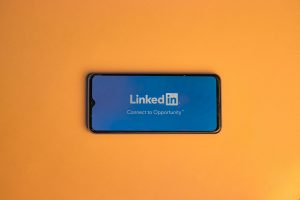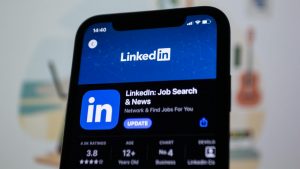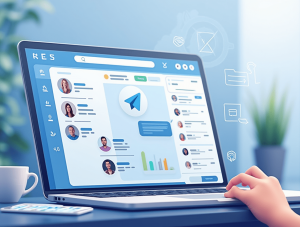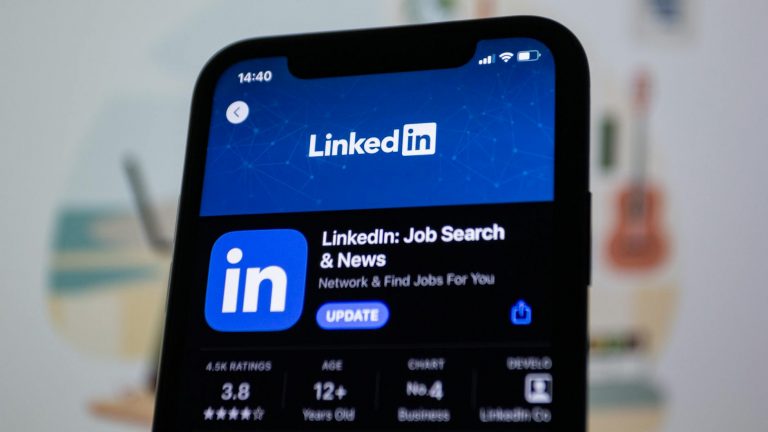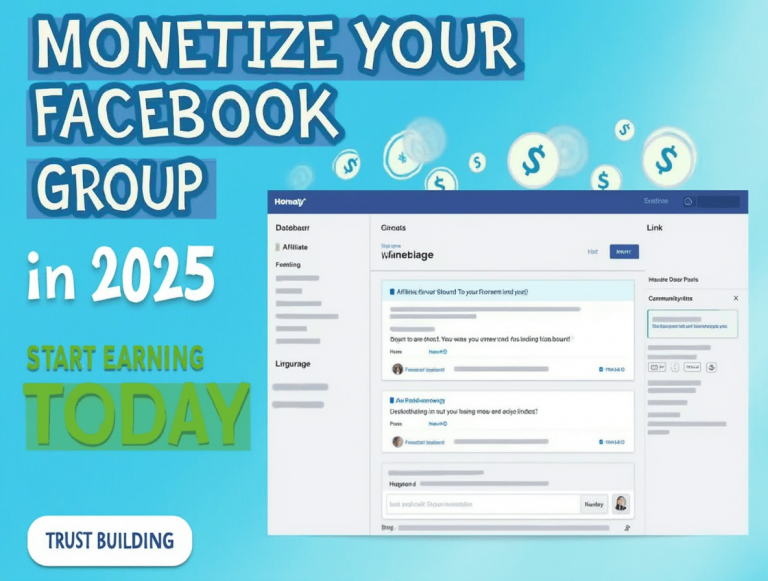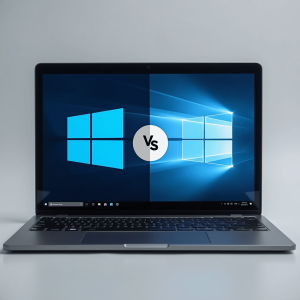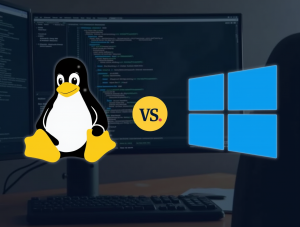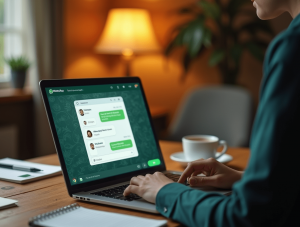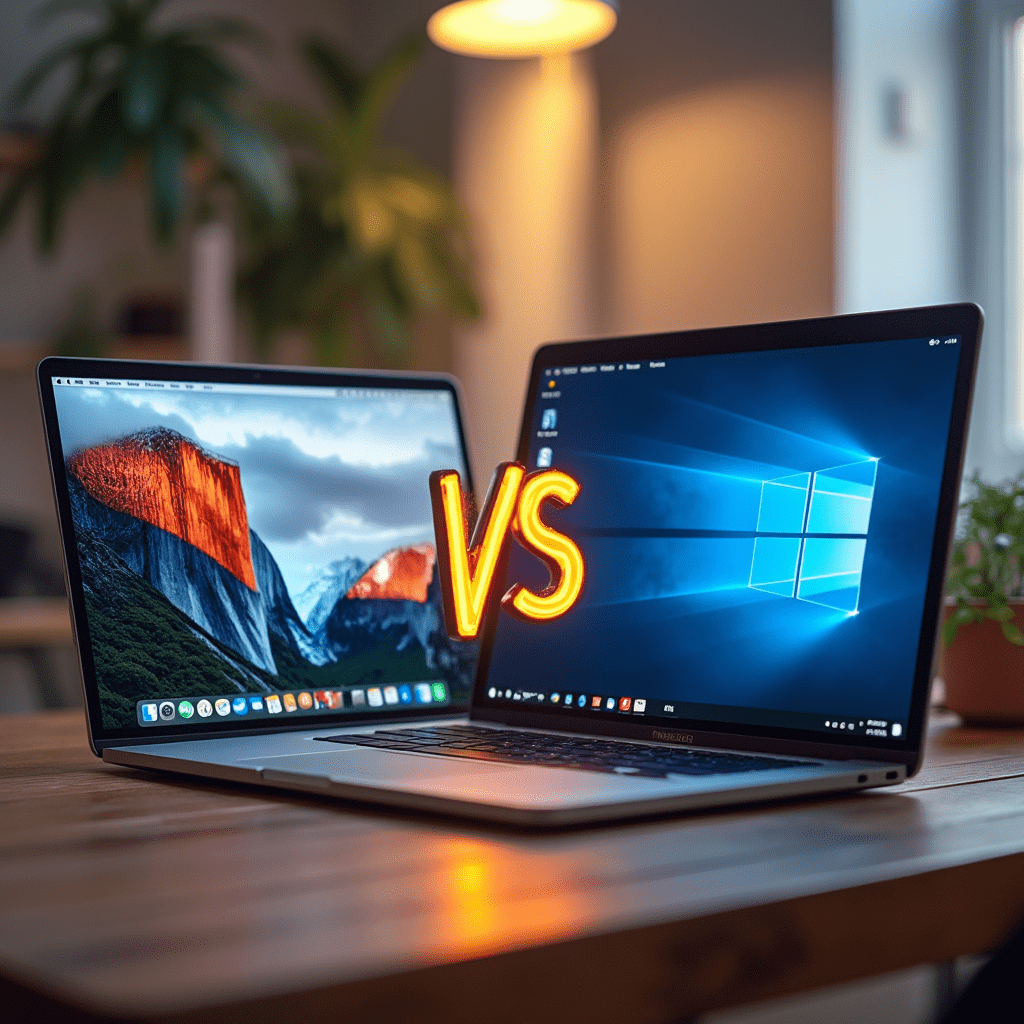
Standing in front of rows of gleaming laptops at your local electronics store, you might wonder: “Is that sleek MacBook worth the premium price, or would a Windows laptop better suit my needs and budget?” You’re not alone—this decision confronts millions of consumers each year, with passionate advocates on both sides.
According to recent market research, while Windows laptops command roughly 75% of the global market share, MacBooks generate over 50% of the industry’s profits despite their smaller sales volume. This stark contrast hints at the fundamental differences between these platforms—differences that go far beyond mere brand preference.
This comprehensive guide will help you navigate the MacBook vs. Windows laptop debate by examining key factors including performance, design, software ecosystem, price-to-value ratio, and longevity. By the end, you’ll have a clear understanding of which option best aligns with your specific needs and priorities.
Design and Build Quality
MacBooks: Premium Uniformity
Apple’s laptop lineup offers remarkable consistency in design philosophy. Every MacBook features:
- Aluminum Unibody Construction: Single-piece aluminum chassis that provides durability while maintaining a premium feel
- Minimalist Aesthetic: Clean lines, limited port selection, and restrained design elements
- High-Resolution Displays: Retina displays with excellent color accuracy and brightness
- Industry-Leading Trackpads: Large, precise glass trackpads with haptic feedback
- Cohesive Design Language: Consistent design across all models, creating instantly recognizable products
The latest MacBook Pro and Air models feature Apple’s redesigned keyboard, impressive speakers, and the innovative Touch Bar on select models. The build quality is consistently excellent, with tight tolerances and premium materials throughout.
Windows Laptops: Diverse Options
The Windows laptop market offers tremendous diversity in design and build quality:
- Material Variety: Options ranging from premium aluminum and carbon fiber to budget-friendly plastic
- Design Diversity: Everything from ultraportable thin-and-lights to gaming behemoths with aggressive styling
- Display Options: OLED, high-refresh rate, touchscreen, and convertible options unavailable in the MacBook lineup
- Port Selection: Generally more generous port selection, though premium ultrabooks are increasingly minimalist
- Variable Build Quality: Significant differences between budget and premium offerings
Premium Windows laptops from manufacturers like Dell, Microsoft, Lenovo, and HP often rival or even exceed MacBooks in build quality. The Microsoft Surface Laptop and Dell XPS series, for example, offer exceptional craftsmanship comparable to Apple’s offerings.
Performance and Hardware Options
MacBook Performance
With Apple’s transition to its custom silicon, the performance landscape has shifted dramatically:
- Apple Silicon: M-series chips offer exceptional performance-per-watt, with the latest M3 Pro and M3 Max processors delivering impressive performance for professional workloads
- Integrated Approach: Tightly integrated hardware and software allows for optimized performance
- Limited Customization: Few configuration options available at purchase, and virtually no upgrade potential afterward
- Graphics Performance: Integrated GPU performance has improved dramatically with Apple Silicon, but lacks the raw power of dedicated high-end GPUs in gaming-focused Windows laptops
- RAM Handling: Efficient memory management, but RAM is fixed at purchase
MacBooks excel in battery efficiency and sustained performance without thermal throttling. The latest models handle professional workloads like video editing, programming, and graphic design with impressive speed and efficiency.
Windows Laptop Performance
Windows laptops offer more hardware flexibility:
- Processor Variety: Options range from budget Intel Celeron and AMD Ryzen 3 processors to high-performance Intel Core i9 and AMD Ryzen 9 chips
- Dedicated Graphics: Access to powerful NVIDIA RTX and AMD Radeon graphics cards for gaming and professional applications
- Customization Options: More configuration options at purchase and greater upgrade potential afterward (though this varies by model)
- Specialized Configurations: Purpose-built machines for gaming, content creation, business, or budget-conscious consumers
- Thermal Considerations: Performance sometimes limited by thermal constraints, particularly in thinner designs
High-end Windows laptops can offer raw performance advantages in specific scenarios, particularly for gaming or specialized workloads that benefit from dedicated graphics processors. Budget options provide accessibility at lower price points, albeit with corresponding performance limitations.
Operating System and Software
macOS: Streamlined Integration
Apple’s macOS offers several distinctive advantages:
- Stability and Optimization: Built specifically for Apple hardware, resulting in consistent performance
- User-Friendly Interface: Intuitive design with logical organization and consistent behaviors
- Seamless Ecosystem Integration: Tight integration with iPhone, iPad, Apple Watch, and other Apple products
- Included Software Suite: Bundled applications like iMovie, GarageBand, Pages, and Photos
- Security Advantages: Lower malware target, regular security updates, and robust system protections
The macOS environment emphasizes simplicity and intuitive operation, with features like Spotlight search, Mission Control, and straightforward file management. The App Store provides a curated selection of optimized applications, though the overall software library is smaller than Windows’.
Windows: Flexibility and Compatibility
Windows 11 brings its own set of advantages:
- Universal Compatibility: Supports the broadest range of software, including most business applications, games, and utilities
- Hardware Flexibility: Works across diverse hardware configurations
- Gaming Superiority: Access to virtually the entire PC gaming library
- Touch and Pen Support: Better integration for touchscreens and stylus input
- Customization Options: More extensive personalization of the operating system
Windows offers more flexibility in how users interact with their computers, with multiple approaches to accomplish the same tasks. This can create a steeper learning curve but ultimately provides more options for power users to optimize their workflow.
Price and Value Proposition
MacBook Pricing Strategy
Apple positions MacBooks as premium products with corresponding price tags:
- Starting Price Points: MacBook Air models begin around $999, while MacBook Pro configurations can exceed $3,000
- Limited Entry-Level Options: Few truly budget-friendly choices
- Consistent Pricing: Less variation in pricing and fewer sales or discounts
- Higher Base Specifications: Even entry-level models feature high-resolution displays and solid performance
- Resale Value: MacBooks typically retain value better than Windows laptops
While the initial investment is higher, many MacBook owners argue the total cost of ownership is justified by longer useful lifespans, better reliability, and higher resale values.
Windows Laptop Price Range
The Windows laptop market spans the entire price spectrum:
- Budget Options: Entry-level Windows laptops start under $300
- Mid-Range Sweet Spot: Excellent value options between $600-$1,000
- Premium Tier: High-end models from $1,200-$3,000+
- Regular Discounting: More frequent sales and price reductions
- Spec-for-Price Advantages: Often more RAM, storage, or processing power at comparable price points to MacBooks
Windows laptops generally offer more hardware for your money at any price point, though this advantage may be offset by other factors like build quality, battery life, or software optimization.
Battery Life and Portability
MacBook Endurance
Apple’s laptops have set new standards for battery performance:
- Industry-Leading Efficiency: Apple Silicon models deliver 15-20+ hours of real-world battery life
- Consistent Performance on Battery: Less performance throttling when unplugged
- Standby Efficiency: Low power consumption in sleep mode
- Fast Charging: Quick top-ups with the right power adapter
- Battery Health Management: Software optimizations to preserve battery longevity
The MacBook Air in particular offers an impressive combination of light weight (2.7-2.8 pounds) and long battery life, making it ideal for frequent travelers and remote workers.
Windows Laptop Mobility
Battery performance in Windows laptops varies widely:
- Ultraportable Excellence: Premium ultrabooks like the Dell XPS 13 and HP Spectre x360 offer excellent battery life of 10-15 hours
- Gaming Laptop Limitations: High-performance models often manage only 3-6 hours of battery life
- Weight Range: Options from under 2 pounds to over 7 pounds
- Variable Charging Standards: Inconsistent fast-charging implementation across manufacturers
- Battery Size Tradeoffs: Often a direct relationship between battery capacity and device thickness/weight
The Windows ecosystem offers more variety in the portability/performance balance, allowing consumers to prioritize based on their specific needs.
User Experience and Ecosystem
Apple’s Integrated Ecosystem
The Apple ecosystem provides several unique advantages:
- Continuity Features: Handoff, Universal Clipboard, and AirDrop for seamless workflows across Apple devices
- iCloud Integration: Synchronized photos, documents, and settings across devices
- Communication Integration: FaceTime and iMessage available on MacBooks
- Consistent Interface Design: Similar UI paradigms across macOS, iOS, and iPadOS
- Accessory Compatibility: AirPods, Apple Watch, and other accessories work seamlessly with MacBooks
For users already invested in the Apple ecosystem, a MacBook provides significant additional value through these integration features.
Windows’ Open Ecosystem
Windows offers a different approach to the device ecosystem:
- Cross-Platform Compatibility: Works with Android, iOS, and other platforms through Microsoft’s mobile apps
- Hardware Diversity: Supports a vast array of peripherals and accessories
- Microsoft 365 Integration: Seamless experience with Office applications across devices
- Android Phone Link: Increasing integration with Android smartphones
- Legacy Device Support: Better compatibility with older peripherals and technologies
Windows laptops integrate well into mixed-device environments, offering more flexibility for users who don’t want to commit to a single brand’s ecosystem.
Longevity and Support
MacBook Lifespan
Apple products are known for their longevity:
- Software Support: macOS updates typically available for 7+ years after purchase
- Build Quality Advantage: Durable construction contributes to longer physical lifespan
- Centralized Support: Apple Stores provide direct service and support
- Repair Limitations: Limited user repairability and expensive out-of-warranty service
- Consistent Performance Over Time: Less performance degradation with age compared to many Windows laptops
Many MacBook users report their devices remaining useful for 5-7 years or longer, potentially offsetting the higher initial purchase price.
Windows Laptop Durability
The Windows laptop experience varies significantly:
- Support Variability: Software update timelines and manufacturer support quality differ dramatically between brands
- Business Line Advantages: Enterprise-focused models typically offer better longevity and support
- Repairability Options: Generally more user-serviceable parts, especially in business-oriented models
- Variable Build Quality Impact: Budget models typically have shorter usable lifespans
- Performance Degradation: Often experience more noticeable slowdowns over time
Premium Windows laptops from manufacturers like Lenovo ThinkPad, Dell Latitude, and HP EliteBook series are designed for durability and longevity comparable to MacBooks, while budget models may have significantly shorter useful lives.
Ideal User Profiles
MacBooks are ideal for:
Creative Professionals: The combination of color-accurate displays, performance, and exclusive software like Final Cut Pro and Logic Pro makes MacBooks popular among creative workers.
Apple Ecosystem Users: Those already using iPhones and iPads will benefit most from the seamless integration features.
Battery Life Prioritizers: Users who frequently work away from power outlets will appreciate the exceptional battery performance.
Simplicity Seekers: People who prefer a more streamlined, curated computing experience with less maintenance and configuration.
Long-Term Investors: Those willing to pay more upfront for a device that will remain useful for many years.
Windows laptops are ideal for:
Gamers: Access to the vast PC gaming library and powerful dedicated graphics options make Windows the clear choice for gaming.
Budget-Conscious Buyers: The wide range of price points offers options for every budget.
Business Users: Better compatibility with enterprise software and more IT department familiarity.
Hardware Enthusiasts: Those who value customization options and access to the latest hardware innovations.
Specialized Need Users: People requiring specific features like touchscreens, 2-in-1 functionality, or niche software compatibility.
Making Your Decision
When choosing between a MacBook and a Windows laptop, consider these key questions:
- What’s your budget? If it’s under $800, Windows laptops are your only realistic option.
- What software do you need? Check compatibility, as some professional applications are platform-specific.
- Do you already use other Apple products? The ecosystem benefits may tip the scales toward a MacBook.
- How important is gaming? Serious gamers should generally choose Windows laptops.
- Do you need specific features like touchscreens or specialized ports that are only available on certain platforms?
- How long do you plan to keep your laptop? Longer planned usage might justify the higher MacBook investment.
- What’s your technical comfort level? MacBooks generally require less technical knowledge to maintain.
Frequently Asked Questions
Can I run Windows on a MacBook?
Yes, with Apple Silicon MacBooks, you can run Windows through virtualization software like Parallels. However, this approach has some performance limitations compared to native Windows laptops.
Are MacBooks worth the higher price?
For many users, yes. The combination of build quality, battery life, performance, and ecosystem integration provides value that justifies the premium for their specific needs. However, if these factors aren’t priorities, Windows laptops offer better hardware specifications for the same price.
Which lasts longer, MacBooks or Windows laptops?
On average, MacBooks tend to have longer useful lifespans, often remaining practical for 5-7 years or more. Premium business-class Windows laptops can match this longevity, but budget Windows machines typically have shorter useful lives of 2-4 years.
Are MacBooks better for programming?
MacBooks are popular among developers, particularly for web and iOS development, due to their Unix-based operating system and build quality. However, Windows laptops are equally capable for most programming tasks, and some development environments (particularly in enterprise and Windows-specific development) work better on Windows.


